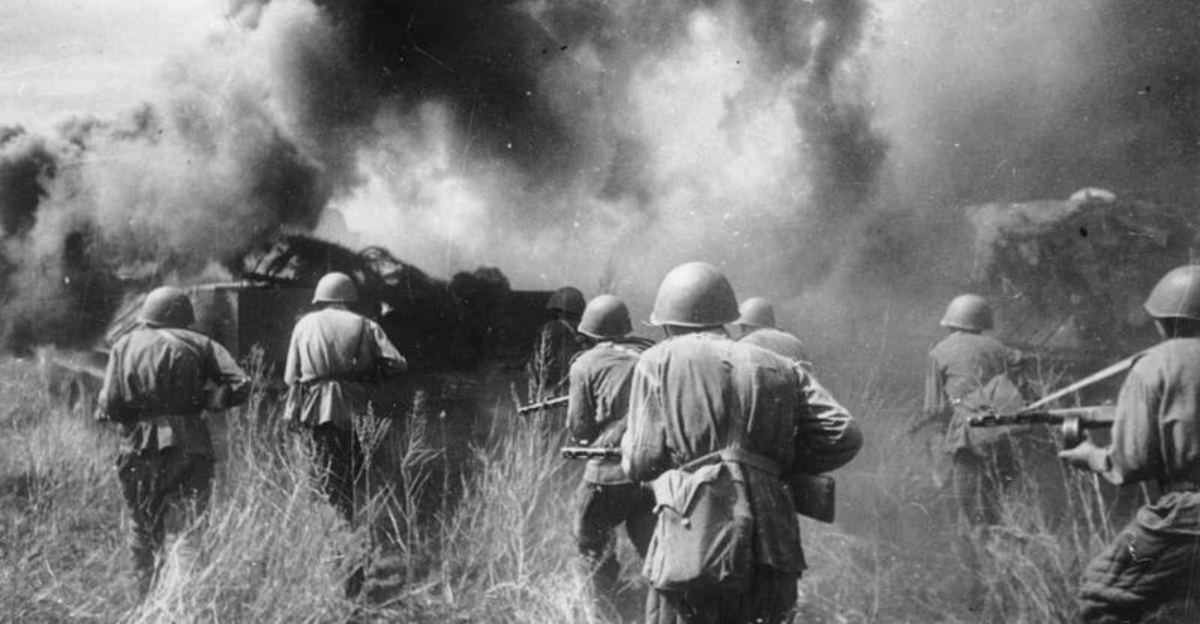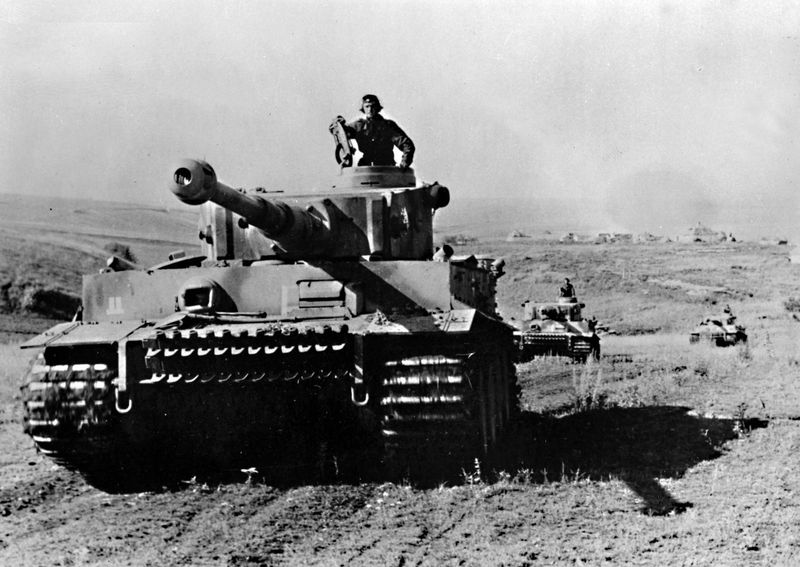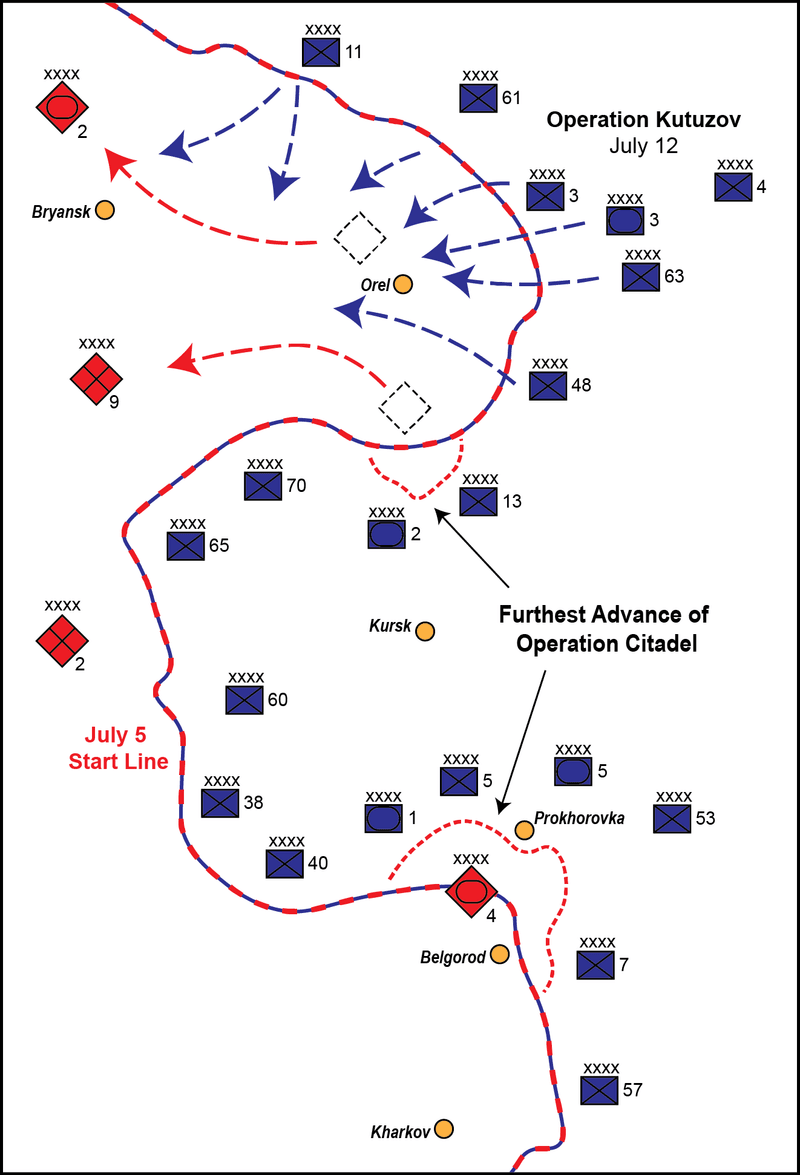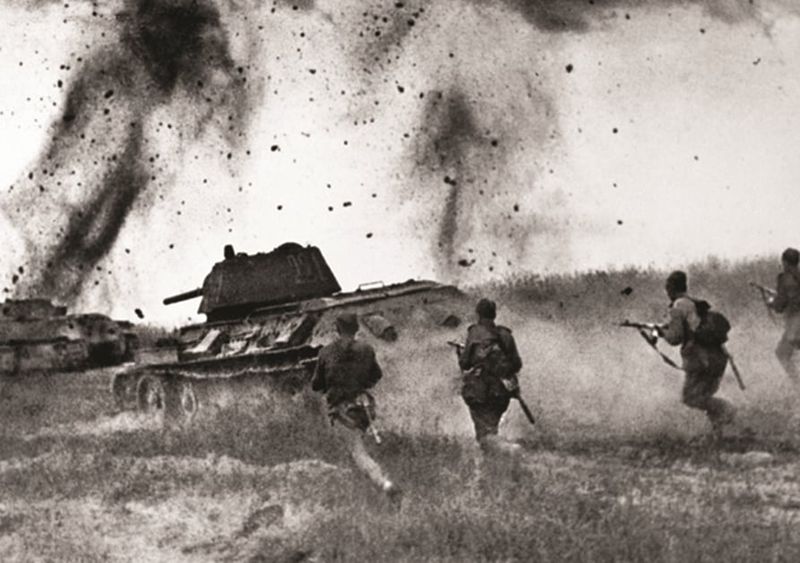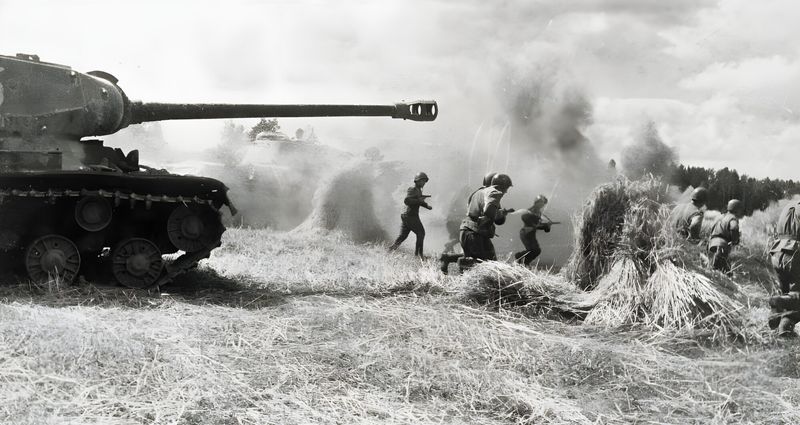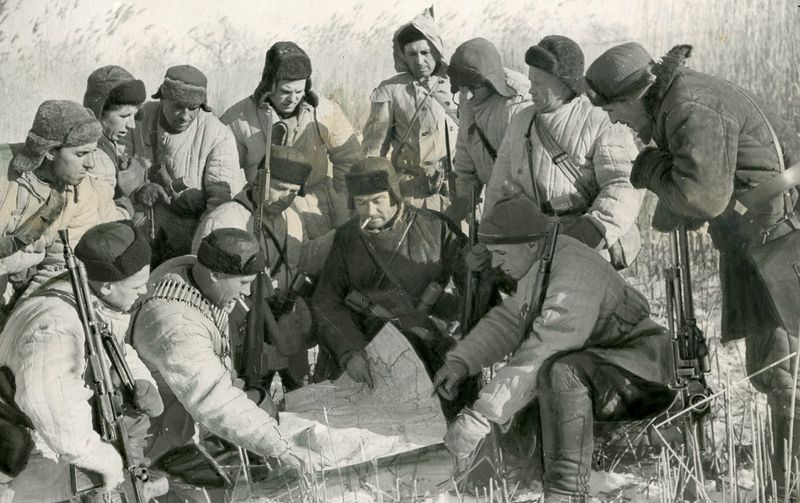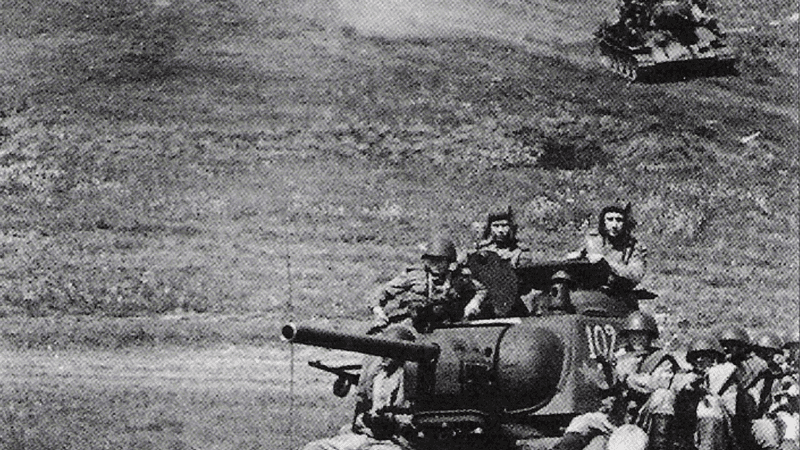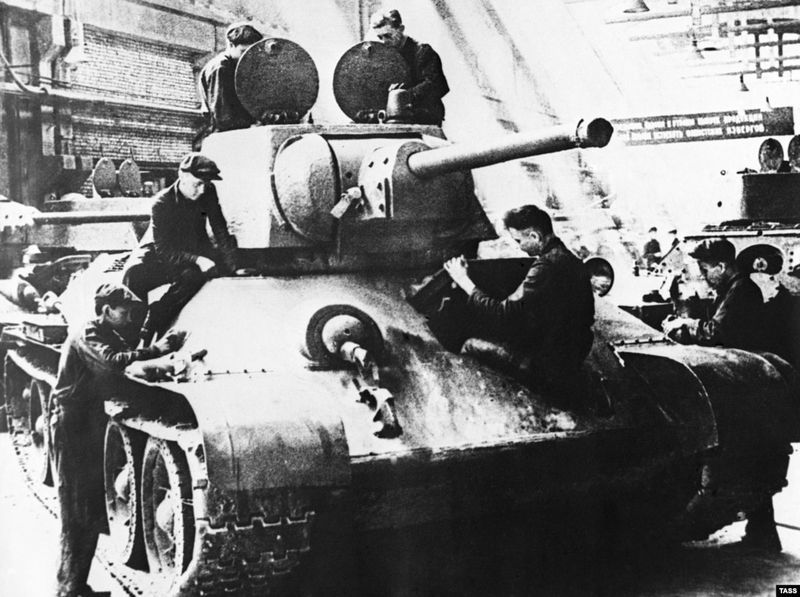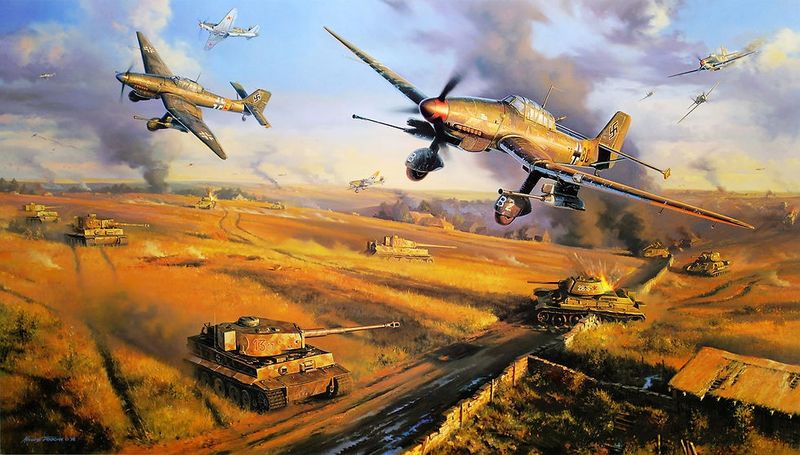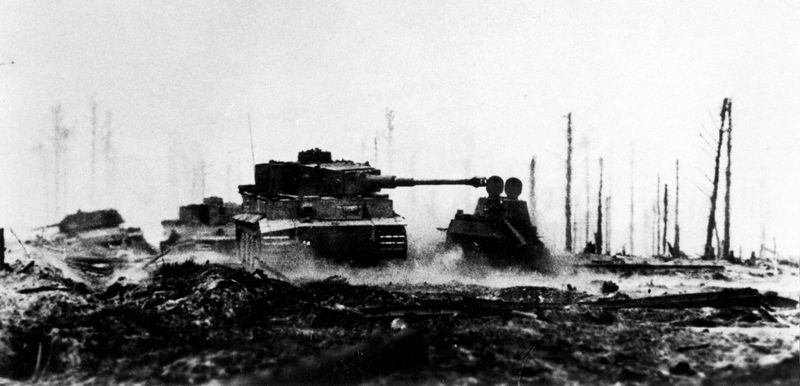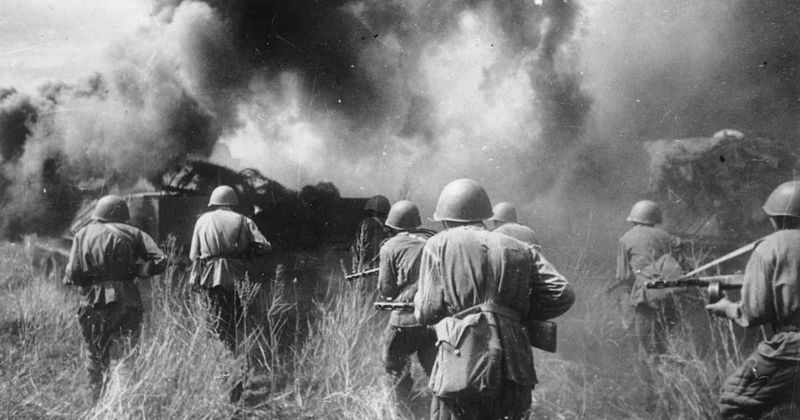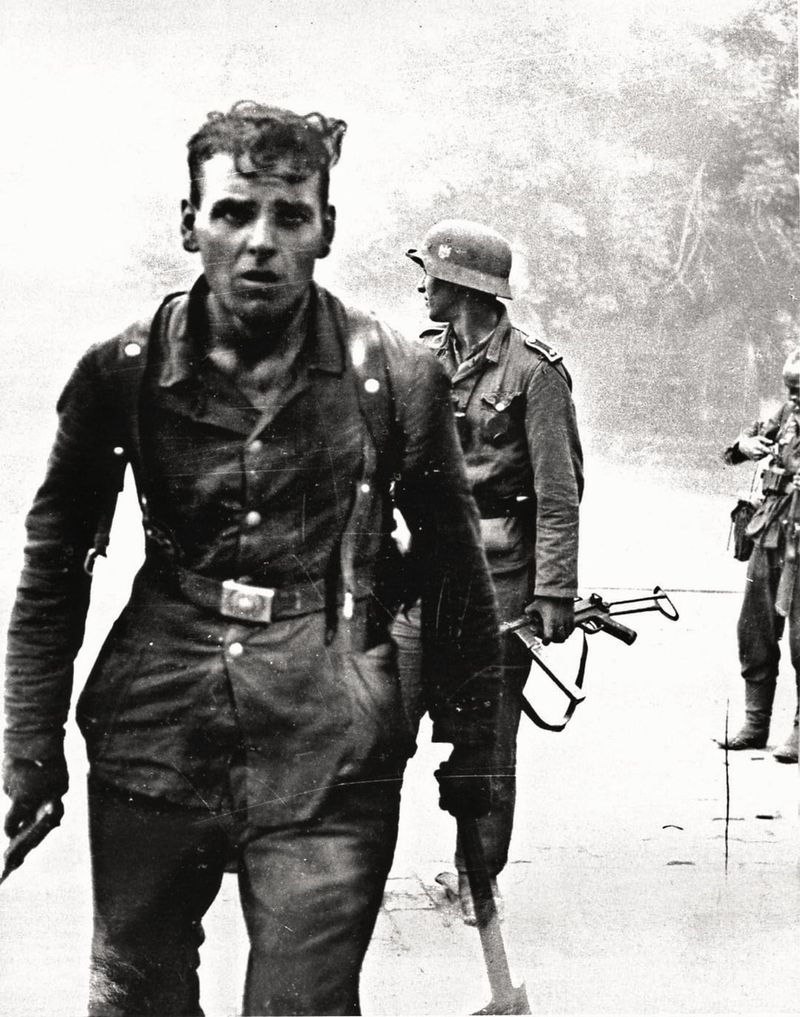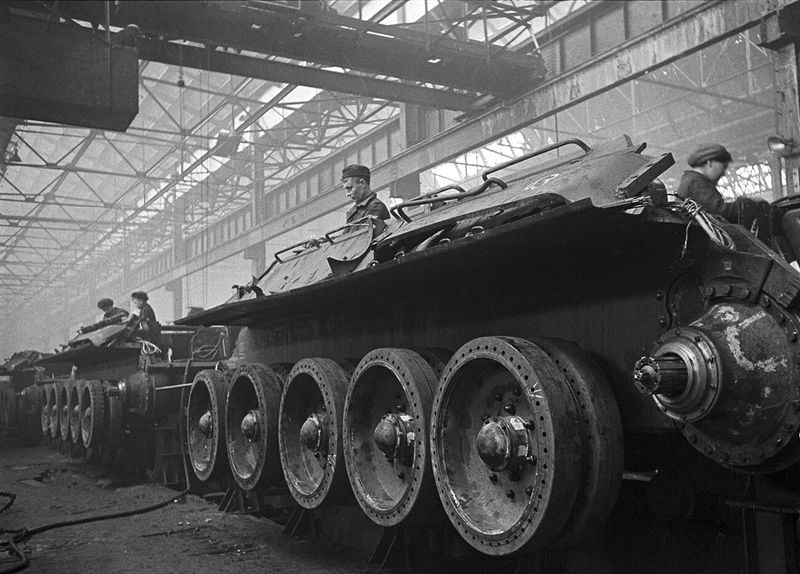In the summer of 1943, the largest tank battle in history erupted on the Eastern Front of World War II. The Battle of Kursk marked a critical turning point in the conflict between Nazi Germany and the Soviet Union.
As Hitler’s forces launched Operation Citadel to encircle Soviet troops, they instead found themselves facing a meticulously prepared Red Army with defensive positions stretching miles deep.
What followed would permanently alter the course of the war in Europe.
1. It Was the Largest Tank Battle in Human History
The plains near Kursk transformed into a mechanical graveyard as over 6,000 tanks clashed in an unprecedented showdown. German Panthers and Tigers faced off against Soviet T-34s in a thunderous confrontation that shook the earth itself. The scale remains unmatched even by modern warfare standards.
Smoke blackened the summer sky as tanks fired at point-blank range, often just yards apart. Crews fought in sweltering heat, surrounded by burning metal coffins.
The sheer concentration of armored vehicles created a battlefield where survival often came down to which gunner could aim fastest. Nothing before or since has matched this massive collision of steel giants.
2. Operation Citadel Was Hitler’s Last Major Eastern Offensive
Hitler gambled everything on this massive pincer movement designed to encircle Soviet forces within the Kursk salient. The Führer believed his new Panther and Tiger tanks would slice through Russian defenses like a hot knife through butter. Reality proved devastatingly different.
German commanders actually advised against the operation, knowing Soviet preparations were extensive. Hitler delayed the attack for months waiting for more advanced tanks, giving the Soviets precious time to fortify.
When the offensive finally collapsed, Germany permanently lost its ability to launch large-scale attacks on the Eastern Front. From this moment forward, the Wehrmacht found itself perpetually retreating westward.
3. The Soviets Knew It Was Coming
Soviet intelligence scored a massive victory by predicting Germany’s plans months in advance. The “Lucy” spy ring in Switzerland and British Ultra decrypts provided Stalin with detailed information about Operation Citadel’s timing and approach.
Armed with this foreknowledge, Soviet engineers constructed an astonishing defensive network. Thirteen consecutive defensive belts stretched back nearly 110 miles, filled with over 400,000 mines, thousands of anti-tank guns, and elaborate trench systems.
Red Army soldiers dug over 3,000 miles of trenches by hand—enough to stretch from Moscow to London. This advance warning transformed what might have been a German victory into a devastating defeat.
4. The Battle Lasted Over a Month
Many history books focus only on the famous tank clash at Prokhorovka, but the Battle of Kursk raged from July 5 to August 23, 1943. German forces initially made slow progress against fanatical Soviet resistance in the opening days.
By mid-July, the momentum had shifted completely. Soviet counteroffensives at Orel and Belgorod smashed into German flanks, forcing Hitler to abandon the operation and redirect forces to Italy where Allied troops had landed in Sicily.
This prolonged struggle drained German resources that could never be replaced. The month-long meat grinder consumed men, machines, and morale at a rate the Wehrmacht simply couldn’t sustain for the war’s remaining two years.
5. Over 2 Million Soldiers Took Part
The clash at Kursk wasn’t merely a tank battle—it was a massive confrontation involving 2.5 million soldiers from both sides. Soviet forces alone deployed 1.9 million troops, while Germany committed approximately 780,000 men to Operation Citadel.
These soldiers fought across a front stretching hundreds of miles. Infantry assaulted entrenched positions with flamethrowers and grenades while artillery batteries fired millions of shells.
The human toll proved staggering: nearly 860,000 Soviet casualties and 170,000 German losses. Behind these numbers were countless personal tragedies—young men who never returned home, families shattered, and villages emptied of their sons and fathers in this titanic struggle.
6. Soviet Depth Defense Strategy Devastated Germany
Marshal Zhukov’s brilliant defensive plan transformed the Kursk salient into a deadly funnel that devoured German armor. Rather than holding a rigid line, Soviet forces created a defense-in-depth system where German tanks would penetrate only to face fresh layers of resistance.
Anti-tank brigades known as “pakfronts” concentrated their fire on lead German vehicles, creating mechanical roadblocks. Specially trained tank-killer teams armed with Molotov cocktails and magnetic mines ambushed panzers in ravines and villages.
Even successful German advances found themselves in carefully planned kill zones. By the time German forces reached the main Soviet defensive positions, their strength had been systematically depleted by this revolutionary defensive approach.
7. The T-34 Earned Its Legendary Status
Amid the smoke and chaos of Kursk, the Soviet T-34 cemented its reputation as history’s most influential tank. While German Tigers could destroy T-34s from greater distances, the Soviet design excelled in qualities that ultimately mattered more in sustained warfare.
Soviet factories churned out T-34s at an astonishing rate—one factory produced more tanks annually than all of Germany combined. Their wide tracks performed brilliantly on muddy terrain where German tanks often bogged down.
The T-34’s sloped armor deflected many German shells, while its simple design meant damaged tanks could be quickly repaired and returned to battle. This rugged workhorse embodied Soviet military philosophy: quantity has a quality all its own.
8. Air Battles Were Relentless
The skies above Kursk transformed into an aerial slaughterhouse as nearly 3,000 aircraft dueled daily. German Stukas and Focke-Wulf fighters clashed with Soviet Yak-9s and Sturmovik ground-attack planes in history’s largest air campaign to that point.
Soviet pilots implemented the “Kuban Ladder” tactic—flying at staggered altitudes to counter German experience and technology advantages. German air superiority gradually eroded as Soviet pilots gained experience and newer aircraft arrived at the front.
Ground troops witnessed spectacular aerial ballets of destruction overhead as they fought their own battles below. The constant drone of aircraft engines became the battle’s soundtrack, punctuated by the crash of falling planes and the screams of diving bombers.
9. Prokhorovka Was Pure Armored Mayhem
July 12, 1943 witnessed armored warfare at its most chaotic and violent. Nearly 1,000 tanks converged around the small village of Prokhorovka in what became tank combat’s most desperate hour.
The battle devolved into a point-blank melee where tanks often fired at ranges under 100 yards. Soviet T-34s deliberately rammed German Panthers when ammunition ran out. The battlefield became so congested that tanks couldn’t maneuver—they simply fired at whatever enemy appeared through the smoke.
Temperatures inside the tanks reached 120°F as crews fought in a hellscape of burning vehicles and exploding ammunition. By day’s end, hundreds of charred tank hulls littered the landscape in testament to warfare’s industrial evolution.
10. Kursk Was the True Turning Point in WWII
While Stalingrad halted Germany’s advance, Kursk shattered its offensive capability permanently. The strategic initiative on the Eastern Front transferred irrevocably to Soviet hands after this decisive battle.
Germany lost its veteran tank crews and elite SS panzer divisions that could never be adequately replaced. The myth of German technical superiority collapsed as Soviet tactics and production capacity proved more decisive than engineering advantages.
From Kursk onward, the Red Army launched a relentless series of offensives that pushed German forces back nearly 2,000 miles to Berlin. Hitler’s forces found themselves reacting to Soviet moves rather than dictating the pace of war—a fatal strategic reversal that ultimately sealed the Third Reich’s fate.
11. German Morale Took a Massive Hit
Field reports following Kursk revealed a psychological collapse among German forces. Soldiers who had believed in ultimate victory now privately acknowledged defeat was inevitable. Veterans who survived the battle spoke of an unshakable sense that the war was lost.
Letters home captured by Soviet intelligence showed German troops questioning Hitler’s leadership for the first time. The vaunted Waffen-SS divisions, once considered invincible, had been humbled by Soviet defenders.
Foreign observers noted the change in German military bearing. The swagger and confidence of earlier campaigns disappeared, replaced by grim determination merely to survive. This psychological turning point proved as significant as the military defeat itself.
12. It Proved Industrial Might Wins Wars
Kursk demonstrated that Germany’s technical advantages couldn’t overcome Soviet industrial capacity. While Tiger tanks could destroy multiple T-34s, the Soviets could replace their losses within days while German factories struggled for months to rebuild their armored forces.
Soviet factories, many relocated beyond the Ural Mountains, operated around the clock producing weapons in staggering quantities. Women made up over 50% of the Soviet industrial workforce, maintaining production while men fought at the front.
American Lend-Lease supplies further enhanced Soviet manufacturing capability. The battle became a mathematical equation Germany couldn’t solve—they simply couldn’t destroy Soviet equipment faster than it could be replaced, a lesson in industrial warfare that military planners still study today.
